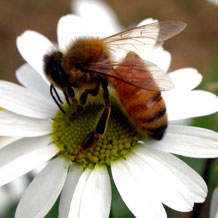- Home
- About the alliance
- Key researchers
- News
- Events
- Case studies
- Climate science: wheat can’t stand the heat
- Controlling major diseases of world crops
- Farming to feed the nation
- Food security in early modern England
- Healthy Food from Healthy Animals
- Helping UK wheat breeders through genomics
- Impacts of agriculture on greenhouse methane capture by soils
- Livestock can produce food that is better for people and the planet
- Managing sheep scab
- Parasitoid webs in organic and conventional farming systems
- Positively managing ecosystems to increase their service value
- Predicting and protecting our pollinators
- Promoting sustainable food consumption and production
- Putting a stop to pain and distress in farm animals
- Seagrass and food security
- Technology to improve water usage efficiency
- The 'push-pull' cropping system
- The North Wyke Farm Platform
- Towards sustainable agriculture
- Transparency of food prices
- Yes we (may) have no bananas
- South West Biosciences Doctoral Training Partnership
- Contact us

Honeybee fitted with transponder.
Predicting and protecting our pollinators
Rothamsted Research
Researcher: Juliet Osborne
Funders: BBSRC; Insect Pollinator Initiative
Rothamsted’s Pollination Ecology Group has been undertaking some research to deliver a field-tested model of honeybee colony dynamics which can help us to understand the primary causes for changes to bee populations.
Honeybees are critical to crop and wild plant pollination. Understanding their population dynamics is essential to deliver options for sustainable and productive agro-ecosystems.
Rothamsted’s research has made a substantial impact in determining the underlying causes for bee population changes in agricultural landscapes, and predicting consequential effects on crop and wild flower pollination.
One of the major concerns for bee populations is the Verroa Mite; just 2000 Varroa mites can kill a colony of 30,000 honeybees.
The model that has been developed, coupled with experimentation using the unique harmonic radar technology at Rothamsted, allows the team to examine the subtle but critical interactions between Varroa mite infestation, disease and foraging behaviour.
The project contributes directly to the Insect pollinator initiative and has attracted substantial funding from Research Councils, Defra, the Wellcome Trust and a significant investment from Syngenta.
The finalised model and results will aid bee colony management or land management in protecting the world's most important pollinating insects, which are estimated to be worth about £200million a year to British agriculture.


